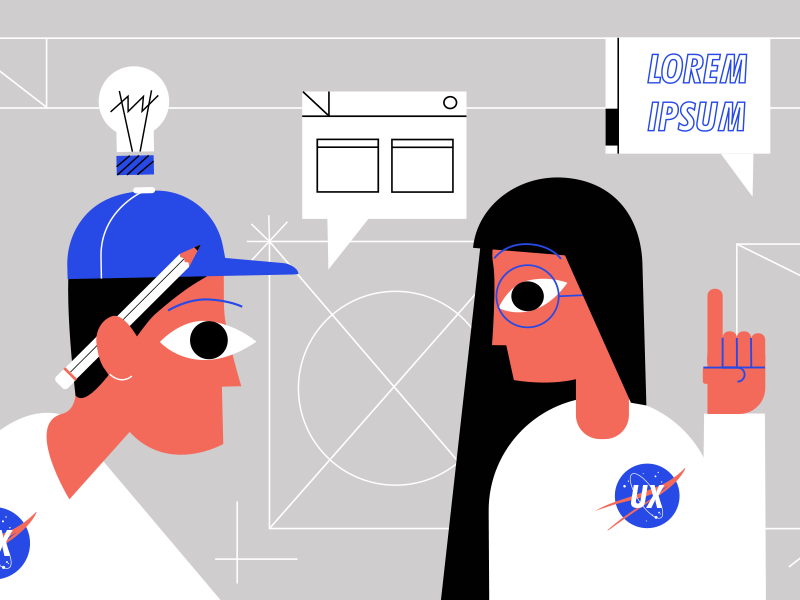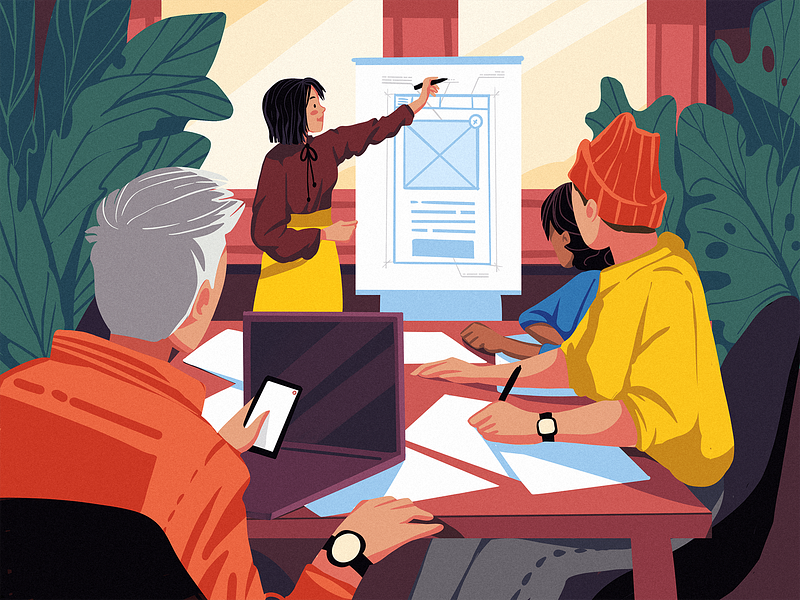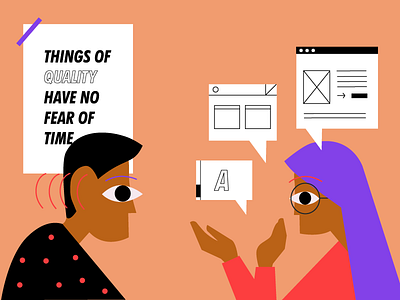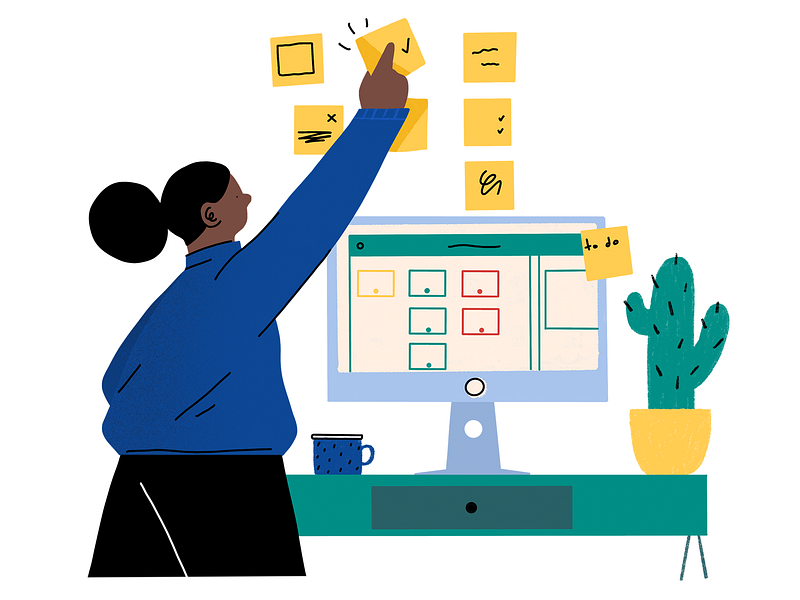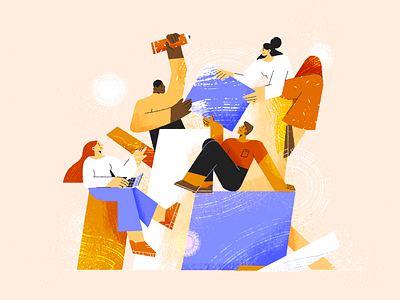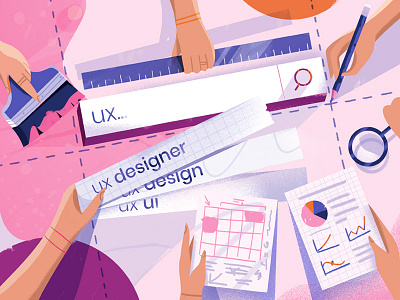In this sponsored blog post by UX Lead at Cloudways, go behind the scenes into how a fully distributed team designed a new service that’s resulting in nearly 100% user conversions. Plus, the biggest takeaways on what great UX design truly means.
Why UX? The law of attraction
One of the things that I firmly believe about user experience (UX) is that good UX equals good marketing and ultimately, good business.
To me, good UX is putting your customers’ interests first: When you help them grow, your own company will also grow as an inevitable result.
Think law of attraction—you attract what you put out into the world. When you give generously, so will you receive.
Before you call me an indomitable hippie, I’ll remind you that marketing guru Zig Ziglar once said,
“If you help enough people get what they want, you will get what you want.”
So when I was asked to lead the UX for the Agency Partnership Program at Cloudways, I knew I could fully embrace the project. Their ultimate goal was to help customers grow, and build trusting relationships. Never once was profit mentioned to me (although the plan is to get that, too, as a healthy and welcome side-effect).
Cloudways explained through a designer’s eyes
Is Cloudways new to you? They offer a managed hosting platform for WordPress, Magento, and PHP-based apps that allows users to easily set up and run their own servers from Google, Amazon, DigitalOcean, Linode, and Vultr.
If you’re a designer, like me, and the idea of setting up a VPS on DigitalOcean (or any other server) makes you break out in hives, Cloudways are your saviors.
When I first started on the platform, I watched a video explaining how to migrate all my WordPress sites to Cloudways (super-easy thanks to their plugin), and nothing else. I was able to get my servers and migrations up and running immediately without any problems, headaches, or skin rashes.
I halved my monthly spend in one go, tripled my hosting capabilities (at least), and was suddenly able to muck around with as many new projects as I liked without incurring the extra costs that managed WordPress hosting comes with.
I was also always lucky with support—whenever I needed help for any reason, it was always at hand and my issue resolved efficiently and knowledgeably by a customer support technician.
The real problem that needed solving
However, this hasn’t always been the case for all customers. And a company is only ever as good as its support. In some cases, trust was broken and needed to be thoroughly rebuilt across the whole relationship.
So, we decided we’d turn this problem into an opportunity: enter the Agency Partnership Program. As the Cloudways blog says:
“The Agency Partnership Program is designed to help agencies get even more out of their relationship with us. Agencies of any size are eligible to join whether or not they already use the Cloudways Platform. We want the program to be unlike anything else out there, with a true focus on building long-lasting, mutually beneficial partnerships.”
It wasn’t the first time that Cloudways had thought of building a similar program. However, it hadn’t always worked. The main reason was that the approach had been less focused on the customers’ real needs. Customers hadn’t been asked directly and specifically what it was that they wanted. As a result, earlier programs had not yielded the desired results.
The great thing is that Cloudways now knew how to succeed: Put humans at the center and ask customers what they really want.
This was the premise behind the new Cloudways Agency Partnership Program. We needed a complete mental shift that focused on the happiness of the humans using the product.
A UX-led partnership program
At this point, re-framing the project as a UX-led one was the best way forward. The Cloudways team were very happy to have me on board, and as a UX person with a strong belief in ethical design, this is a project I’m delighted and honored to be leading.
See, I’m currently organizing an online conference focusing on design. Specifically, design that has care for humans at its center. I want to show any agencies, designers, and developers who haven’t embraced the UX process yet that they absolutely should, because it’s going to make them grow.
Take accessibility for instance—By definition, accessibility implies design with care for humans at its center. And there’s a huge business case for accessibility to be made—one that my summit will make sure to highlight.
Staging the Agency Partnership Program UX project as the case study at the center of the online summit will serve to show that you can indeed grow your business by adopting a UX process that sets humans firmly as its first priority.
These are the elements that we bore in mind as we set up for work on the project:
- Internal validation of the idea, with existing customers
- Following the UX framework of Research > Design > Validation
- Keeping the customer’s perspective in mind every step of the way
A globally distributed UX project
The Agency Partnership Program UX project is a globally distributed project with a team spanning 4 continents. I’m based in Spain, with two members in Pakistan, one in New Zealand, one in Greece, and another satellite member in the United States. Scheduling meetings is always a game of time-zone Tetris.
We have all worked together before, but never on a UX project of this kind, so I had to come up with a plan that would make sure we all follow the same process—and even more importantly, we completed all deliverables successfully and to deadline.
Since the project will be the centerpiece of the design conference, it’s also important to document our progress. While we do that, we need to make sure that the overall goal is always first and foremost in our minds. Our mantra is:
“Ultimately, our goal is to make our clients grow” (thank you Owais—Our Marketing Lead at Cloudways!)
The first thing that I did was outline my process to the team. I shot a quick video where I explained that to me, the UX process involves three main phases:
Research > Design > Validation
However, this process isn’t linear. It’s messy, and you can go back and forth between the phases as much as you need to. Specifically, research is neverending—even the validation process (that is to say, testing) is a form of research. I’d argue that research is the most important part: When you know your customers and their needs intimately, everything else comes quite easily.
In the video, I also share a timetable where I very optimistically assign a calendar month to each of the 3 phases. In my ideal world, together with unicorns, rivers of honey, and marmalade skies, we’d have a month to research, a month to design, and another one to validate. I was laughed out of the Zoom room when I suggested this.
Luckily, a lot of the foundational research was already done. Owais and the team provided me with a host of research materials that had come from direct conversations with a sample of the target audience. This time we were doing it the right way—we asked questions and listened to the answers intently.
This is at the core of good UX: Build a product that you know your customers need and want—because they told you directly.
In practical terms, we set up a weekly working session on Zoom, with a specific agenda every week. These are the broad tasks we established:
- Carry out some additional research
- Analyze the research
- Define the problem
- Ideate the solution
- Define the deliverables in detail
- Create tools for further research (surveys etc)
- Document the process
Every week we’d tackle a set of deliverables and tick it off the list: user personas, surveys, user flows, and so on. Each member of the team would have their own related tasks to accomplish during the rest of the week. For instance, the email sequence part of the user flow would be Max Johns’ task, and so on.
Every step of the way we’d remind ourselves that a smooth experience was what mattered the most. The customers must feel comfortable in the transition, as well as supported and valued.
My main concern as the team lead of a totally virtual team was to make sure that we did deliver. Every week we’d go over the list of deliverables that we’d created at the beginning. I’m very happy to report that we did deliver! A success for a very distributed global team. The Agency Partnership Program is now a reality, in its beta-testing phase with existing customers.
Enter the Agency Partnership Program
I’ll remind you the brief description I entered above:
“The Agency Partnership Program is designed to help agencies get even more out of their relationship with us. Agencies of any size are eligible to join whether or not they already use the Cloudways Platform. We want the program to be unlike anything else out there, with a true focus on building long-lasting, mutually beneficial partnerships.”
In a nutshell, whether or not you already have servers on Cloudways, you will be able to join the program on a tier tailored to your monthly spend. This means you might get Advanced or Premium Support depending on tier, as well as:
- Monthly discounts
- Co-marketing initiatives
- Higher levels of support
- A partnership manager
- Exclusive content and training
This list of benefits was established with input from customers. We know that by delivering these five things we will build trust between Cloudways and their agency customers, enabling a more productive relationship and therefore shared growth. But if you look from the outside in, you see us asking clients whether they mind if we give them a discount and a whole host of benefits—with zero strings attached.
You can see how, once we get the agencies on the phone for a chat explaining what the program does for them, the conversion rate is close to 100%.
At this stage in the process, every single onboarding happens over the phone in a direct conversation.
Arsalan Sajid, the account manager in charge of carrying out the interviews, is an integral part of the team, and would report back every week on the conversation he’d have with the agency owners. This ongoing research helped us hugely in shaping a user flow that would really suit the customers—who think of as partners now.
“Why is Cloudways doing this?” I can hear you ask. I’ll remind you of the Zig Ziglar quote above:
“If you help enough people get what they want, you will get what you want”
Or as Owais Khan, the Marketing Lead at Cloudways said during one of our working sessions on Zoom, “Ultimately, our goal is to make our clients grow”.
The upsides for Cloudways are “happier customers with busier websites, co-marketing that flows both ways, and more agencies around the world seeing for themselves how serious we are about their growth. This is why there’s no cost to join the program.”
In light of this, we also went beyond the immediate practicalities of joining the program (e.g. the onboarding experience and user flow). We started dreaming up and developing the future of the program, aiming to make our partners feel special, supported, and nurtured. We’re looking at a personalized platform experience, a co-marketing program that showcases all partners, and even exclusive content and training sessions on a host of essential topics for the growth of an agency.
The cherry on the cake came when Brent Weaver of UGURUS came on board as a Cloudways Maverick, further proving Cloudways’ commitment to the Agency Partnership Program as a way to help agencies thrive.
Want to get involved?
Every week we’ve had a new report on the conversations that our beta-testers had with their partnership manager. We’ve heard that the program seems so advantageous for the customers that they’ve started moving more servers from other hosting providers to Cloudways. That’s how good it is.
So if we’ve piqued your interest, join the waitlist and jump on board. If you are a designer, like me, you’ll finally be able to have your own dedicated servers in the cloud super-easily—plus, you’ll be part of our great club ■
About The Author: Piccia Neri is a UX expert and global speaker, helping businesses and agencies win on the web by putting users at the center. She loves educating designers & developers on best UX & UI practices. Piccia is also a UX project lead and a Maverick at Cloudways, a cloud hosting platform. She’s currently working on the 1st edition of the virtual conference Design for Conversions.
Find more Process stories on our blog Courtside. Have a suggestion? Contact stories@dribbble.com.
